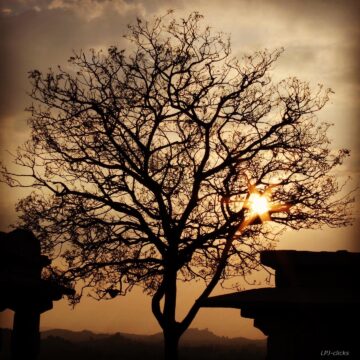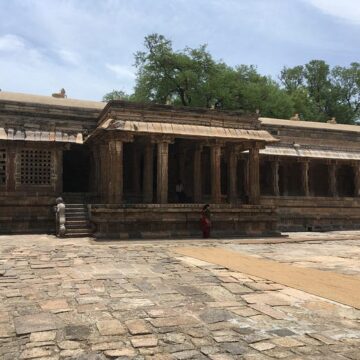Anirudh Kanisetty’s book ‘Lords of the Deccan’ claims that the Ćāḷukyās were originally agriculturalists who formed into bands of brigands going about looting villages and towns, amassing wealth which emboldened them to lay claim to the terrorized territories as sovereigns, legitimised by védic sacrifices.
Lakshmi Prasad J, in his rebuttal, researches and unearths that the Ćāḷukyas of Bādāmī claim descent from Hārīti, a royal matriarch from antiquity, associated with a string of illustrious dynasties. The matronym, Hārītīputra finds mention in the royal panegyrics of at least half a dozen dynasties of Deccan.
With so much information about Calukyas being available in public domain for decades now, one expects a young researcher to be better informed and not get influenced into weaving Bollywood-esque portrayal of our ancestors.
Author: Lakshmi Prasad J (Lakshmi Prasad J)
Agrāharas – The Building Blocks of Dharmik Economy
Agrahāras have long been associated with the Hindu temple, popularly understood as residential housing schemes for brāhmaṇa families around the main temple. Popular narrative has sought to classify them as elitist brahminical dwellings designed to keep non-brāhmaṇas out. The notion, however, deviates from the reality - the primary right of the king over land is exercised by collecting a portion of produce as a ‘prime’ (agra) tax. When such tax revenue is gifted to a donee resulting in a ‘loss’ (hāra) to the state, it is called agrahāra. The lands gifted to brāhmaṇas are called brahmadéyas. These lands are typically agricultural lands that were already brought to revenue. Gifting of such lands has the effect of transferring the tax revenue therefrom to the donees. The brahmadéyas, are also not exclusively brahminical settlements.
Lakshmi Prasad J explores all this, and the importance and position of agrahāras in the ancient dharmik economy, in the first part of this series.


